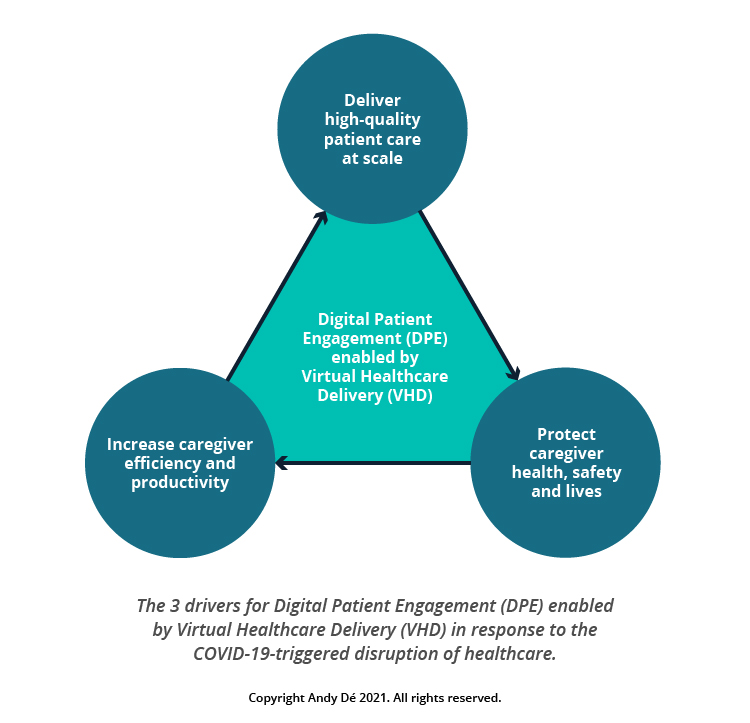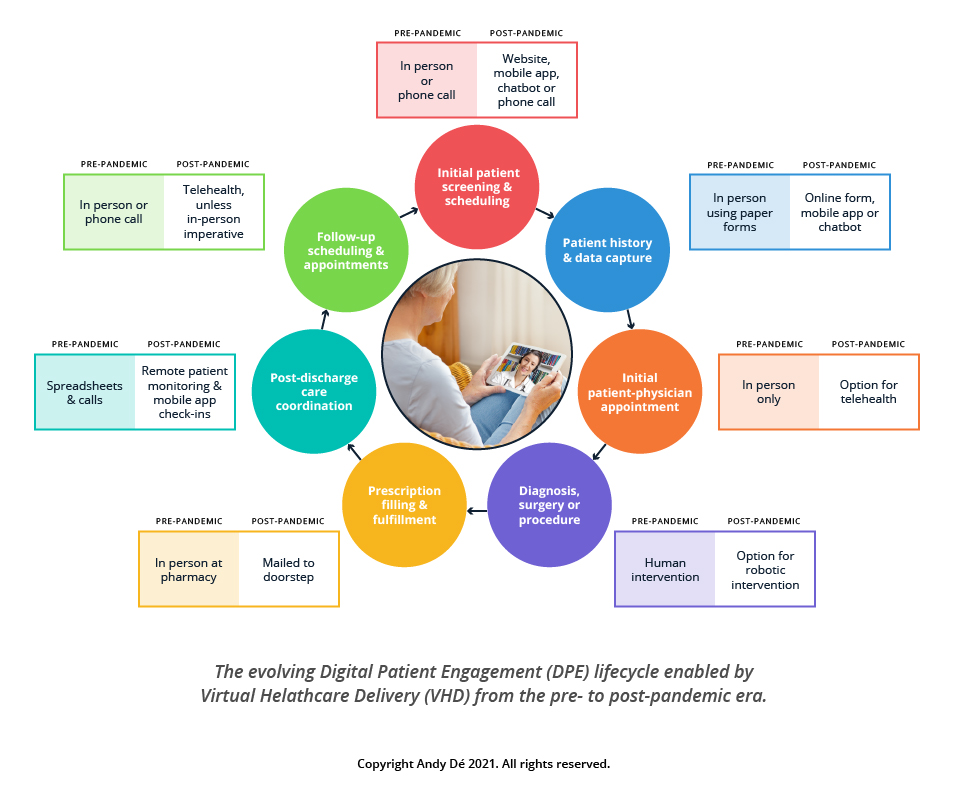Part 2
Last week, we started a new series featuring healthcare visionary and thought leader Andy Dé. In this series, Dé discusses how COVID-19 has triggered remarkable digital transformation and uncovers five long-term innovation implications that providers, healthcare leaders, and payers need to consider.
Catch up on the first implication—advanced analytics for vaccine administration—then read on to explore number two in this week’s article.
Innovation implication #2: Digital patient engagement and virtual healthcare delivery
Protecting the health, well-being and safety of healthcare practitioners and first responders is paramount — and will accelerate adoption of Digital Patient Engagement (DPE), enabled by Virtual Healthcare Delivery (VHD) solutions (also known as “Hospital at Home.)”
As pictured below, there are three primary drivers for DPE and VHD:
- A clear need to deliver high quality healthcare to a massive number of patients afflicted with a contagious disease and co-morbidities.
- Risks presented by acquiring COVID-19 combined with continued lack of sufficient equipment, PPE, and rest for healthcare workers
- The need to minimize direct contact of providers with patients while increasing level of care efficiency and productivity

When I have this conversation with healthcare colleagues, the next question I typically receive is: “Andy, this sounds great, but where do we start?” The chart below demonstrates several helpful examples of how technology can be used to transform typical patient interactions and needs:

If you’re interested in more details about how to actually make changes like the ones described above, reach out to start a conversation. Join me back here on the MedeAnalytics blog next week for Innovation implications #3: Artificial intelligence and machine learning for operations, revenue cycle and supply change management innovation and #4: Medical robotics.
Get our take on industry trends
Crawl: Bringing Data Science into your Organization
Throughout my career as a data scientist, I’ve been lucky enough to have a few opportunities to build data science…
Read on...Tell the best healthcare story with data dashboards
By this point, we’ve all heard the statistic that healthcare data is growing at 36% annually. The result of this…
Read on...


